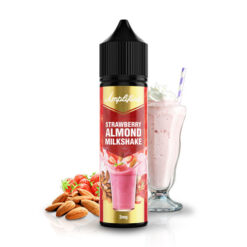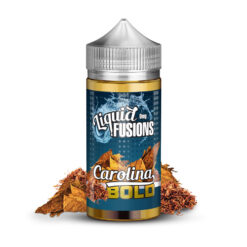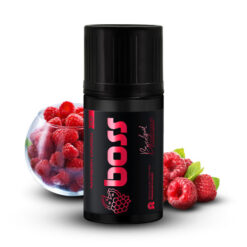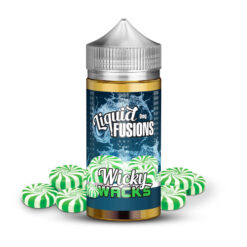As vaping continues to gain popularity as an alternative to traditional smoking, many users are left wondering about potential allergic reactions related to e-liquids and vape devices. While vaping is widely considered a less harmful option compared to smoking, some individuals may experience sensitivities to specific ingredients used in e-liquids. If you have ever had unusual symptoms after vaping, this in-depth guide will help you understand common allergens found in vape juice, how to recognise signs of a reaction, and practical tips for safer vaping if you have sensitivities.
Understanding The Components Of E-Liquids
Most e-liquids consist of four primary components: propylene glycol (PG), vegetable glycerin (VG), nicotine, and flavourings. Although these ingredients are generally safe for the majority of users, they can trigger adverse reactions in sensitive individuals. Knowing what these components are and how they work is essential for identifying potential allergens.
Propylene Glycol (PG)
Propylene glycol is a synthetic liquid substance that helps carry flavour and provides the “throat hit” that many vapers enjoy, mimicking the sensation of smoking. However, PG is also one of the most common culprits behind vaping-related allergies. Symptoms of PG sensitivity can include dry mouth, sore throat, skin irritation, and even respiratory issues in some users.
Vegetable Glycerin (VG)
VG is a thicker liquid, often derived from plant oils like soy or palm, and is responsible for creating dense vapour clouds. Although VG is considered hypoallergenic for most, individuals with specific plant allergies may react negatively to VG sourced from those plants, potentially experiencing mild skin or digestive issues.
Nicotine
While nicotine itself is not a common allergen, some individuals may be sensitive to nicotine’s effects, especially at high concentrations. Symptoms such as dizziness, headaches, nausea, and rapid heart rate may indicate nicotine sensitivity rather than an allergy, but they can still be problematic for users.
Flavourings
Flavourings add variety to the vaping experience, ranging from fruits and desserts to menthol and tobacco options. However, these flavourings can sometimes include natural extracts derived from nuts, fruits, or other allergens, potentially causing reactions in sensitive users. Even “natural” flavourings can trigger food-related allergies, making it vital to review ingredients if you have known sensitivities.
Recommended products
-
Amplified – Strawberry Almond Milkshake
R240.00 -
Liquid Fusions – Carolina Bold
R140.00 -
Boss E-Liquids – Raspberry Crumble
R260.00 -
Liquid Fusions – Wicky Wacks
R270.00
Common Signs Of An Allergic Reaction To Vaping
Identifying the symptoms of an allergy or sensitivity to vaping ingredients is crucial for addressing the problem early. Here are some common signs that may suggest a reaction to one or more components of your e-liquid:
- Respiratory symptoms:
- Coughing, wheezing, shortness of breath, and chest tightness.
- Worsening asthma-like symptoms for individuals with pre-existing respiratory conditions.
- Skin reactions:
- Itchy skin, rashes, hives, or eczema flare-ups.
- Irritation around the mouth, lips, or hands where contact with the e-liquid occurs.
- Digestive issues:
- Nausea, vomiting, or stomach cramps shortly after vaping.
- This may indicate sensitivity to nicotine or flavourings.
- Mouth and throat irritation:
- Burning sensations, soreness, or dryness in the throat and mouth.
- Common with PG sensitivity and sometimes exacerbated by high-nicotine liquids.
Managing Allergies And Sensitivities: Tips For Safer Vaping
If you suspect that vaping is causing allergic reactions, there are several adjustments you can make to continue vaping more safely:
- Switch to high-VG-e-liquids
- Reduce/eliminate nicotine intake
- Choose hypoallergenic and simple flavours
- Patch test new e-liquids
Switch To High-VG E-Liquids
For those sensitive to PG, consider max VG e-liquids or blends with a higher VG content (e.g., 70% VG, 30% PG). These reduce throat irritation and allergic responses associated with PG-heavy juices.
Reduce/Eliminate Nicotine Intake
If nicotine is suspected to be the trigger, lower the nicotine strength or try nicotine-free options. Many brands offer 0 mg versions of popular flavours, allowing users to enjoy vaping without nicotine’s effects.
Choose Hypoallergenic And Simple Flavours
Stick to single-flavour profiles (like plain menthol or tobacco) and avoid complex dessert blends, which may contain more allergens. Look for brands that offer allergy-friendly or artificial-only flavouring options.
Patch Test New E-Liquids
Before committing to a new e-liquid, perform a patch test by applying a tiny drop to the inside of your wrist and waiting 24 hours to see if any skin reaction occurs.
What To Do If You Experience An Allergic Reaction
If you experience mild symptoms, stop vaping immediately and hydrate to help soothe throat irritation. If symptoms worsen or include severe respiratory difficulty (like trouble breathing, chest tightness, or anaphylaxis), seek immediate medical attention. Recurrent or persistent reactions warrant a visit to a healthcare professional or allergist, who can help identify specific allergens and recommend suitable products or alternatives.
Top Vaping Tips For Allergy-Prone Users
Here are some additional practical tips for those who are sensitive to e-liquid ingredients but still want to enjoy vaping:
- Opt for simple and transparent brands: Choose e-liquid brands that clearly list their ingredients to make informed choices and avoid hidden allergens.
- Consider pre-filled pod systems: Many brands offer disposable and pod-based vapes, which often feature straightforward, simpler ingredient lists compared to customisable e-liquid options.
- Use low-wattage devices: Devices that operate at lower wattages produce cooler and less harsh vapour, reducing the risk of throat irritation and allergic responses, especially for those sensitive to heat or dense vapour production.
- Avoid “natural” flavours if you are sensitive to food allergens: If you have nut, fruit, or plant allergies, avoid “natural” flavouring agents that may be derived from those sources. Stick to synthetic flavours when possible.
Frequently Asked Questions (FAQs)
- Can you be allergic to vaping? – Yes, individuals can be allergic or sensitive to specific ingredients in e-liquids, such as PG, VG, nicotine, or flavourings. Symptoms vary from mild irritation to severe allergic reactions.
- Is VG safer for people with allergies? – VG is generally hypoallergenic, but those with soy or palm allergies should exercise caution, as VG may be sourced from these plants.
- What are the signs of PG sensitivity? – Common signs include a scratchy throat, dry mouth, skin rashes, and mild respiratory irritation. Switching to high-VG e-liquids often helps alleviate these symptoms.
- Are there hypoallergenic e-liquids available? – Yes, some brands offer low-allergen or hypoallergenic e-liquids, typically featuring synthetic flavours and minimal PG content. Be sure to always check labels and ingredient lists.
- Can vaping cause skin reactions? – Although uncommon, hives, itchiness, and rashes can occur if you are allergic to components like PG or flavorings. Opting for VG-based liquids may reduce this risk.
In most cases, vaping is safe and enjoyable. However, for users with specific sensitivities, it requires careful selection of products and ingredients. By understanding what is in your vape juice and recognising early signs of a reaction, allergy-prone users can adjust their vaping habits to suit their health needs.
If you experience persistent symptoms, consulting a healthcare provider or allergist is essential to determine the exact cause and find a vaping solution that works for you. With thoughtful choices, even those with allergies can continue to enjoy vaping while minimising risk and discomfort.










